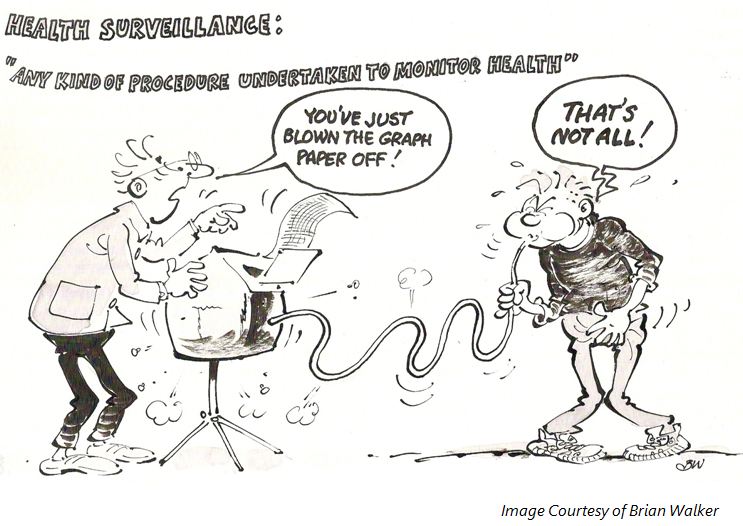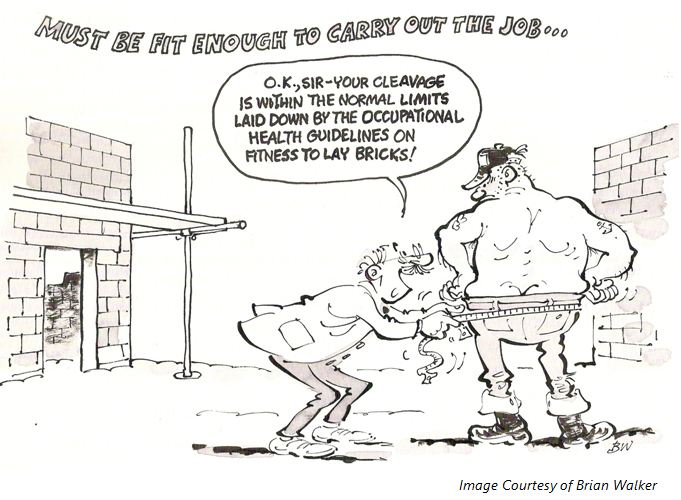Health surveillance is any activity which involves obtaining information about employees’ health and which helps protect employees from health risks at work. Ideally it should be identified in the risk assessment process. It is important to understand that the act of carrying out the health surveillance does not solve a health problem. A hearing test never improved anyone’s hearing. A lung function test never improved anyone’s breathing. It is what is done with the information collected that enables improvement or prevents further deterioration. Employers must have the results interpreted and take action to eliminate or further control exposure.
The objectives for health surveillance are to protect the health of employees by the early detection of adverse changes or disease, collect data for detecting or evaluating health hazards and to help evaluate control measures currently in place.
Health surveillance should not be confused with general health screening or health promotion which will be discussed later. There are specific criteria for health surveillance which are as follows:
There is a disease associated with the substance in use e.g. Asthma or dermatitis.
It is possible to detect the disease or adverse change and reduce risk of further harm.
The conditions in the workplace make it likely that the disease will appear.
Health surveillance is a process; it may be a regular planned assessment of one or more aspects of a worker’s health, for example: lung function or the condition of an employee’s skin.
You will need professional assistance for health surveillance from an occupational health service. Although some surveillance can be done by designated employees or supervisors, such as regular skin checks, they will need to be trained in what to look for. Health surveillance also involves the taking of personal medical information. This is confidential to the employee although the employer is entitled to know the outcome of the surveillance so that any action can be taken if required as it may be necessary to redeploy affected workers.



You actually make it appear so easy together with your presentation but I find this matter to be really something which I feel I would never understand. It sort of feels too complex and extremely extensive for me. I’m looking ahead for your next submit, I will attempt to get the dangle of it!
[…] few weeks ago I published a blog providing an introduction to health surveillance https://www.splitdimension.co.uk/176/ giving the principles that should be followed when identifying risks in the workplace and whether […]